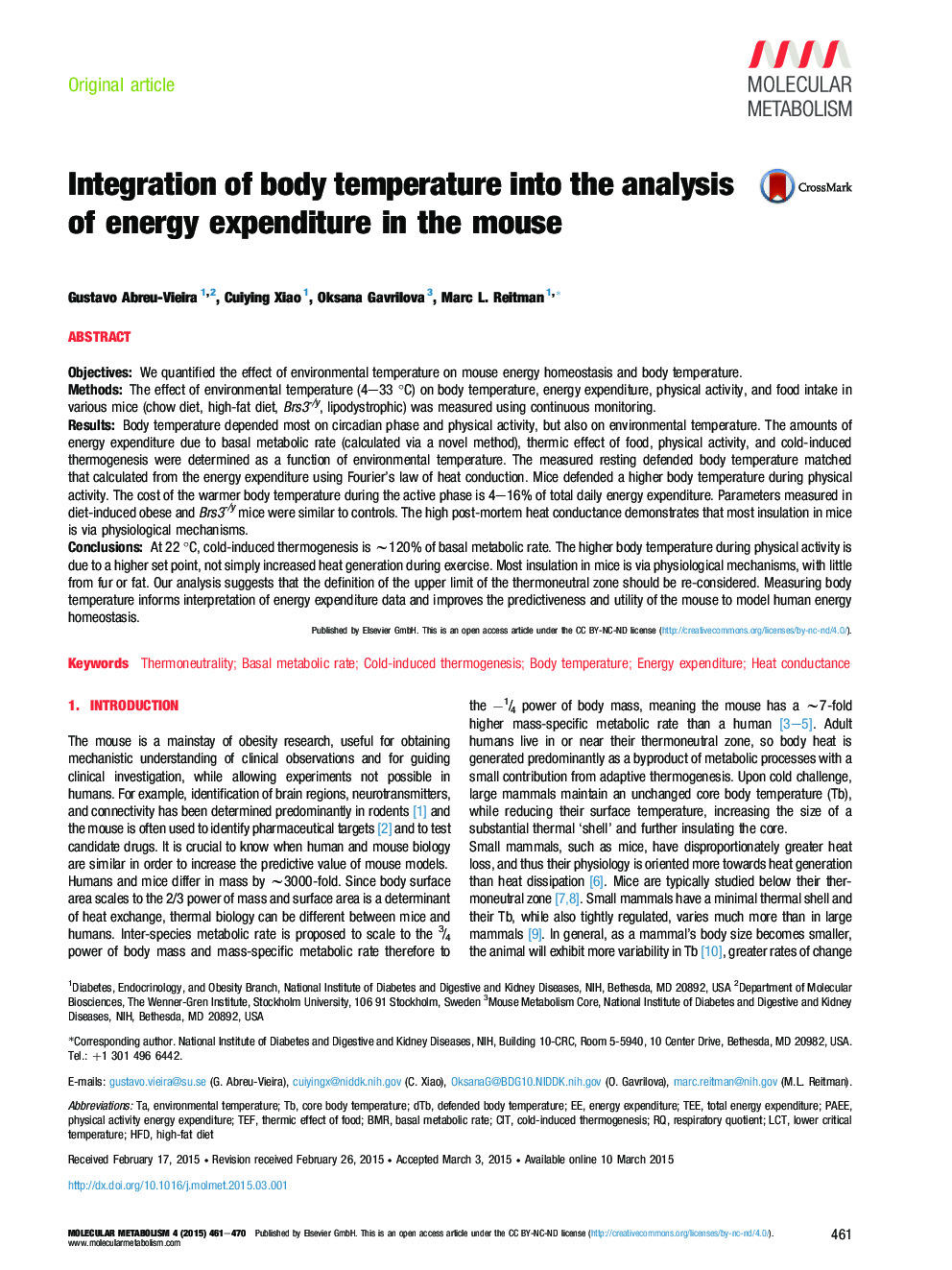| کد مقاله | کد نشریه | سال انتشار | مقاله انگلیسی | نسخه تمام متن |
|---|---|---|---|---|
| 3001307 | 1180583 | 2015 | 10 صفحه PDF | دانلود رایگان |
ObjectivesWe quantified the effect of environmental temperature on mouse energy homeostasis and body temperature.MethodsThe effect of environmental temperature (4–33 °C) on body temperature, energy expenditure, physical activity, and food intake in various mice (chow diet, high-fat diet, Brs3-/y, lipodystrophic) was measured using continuous monitoring.ResultsBody temperature depended most on circadian phase and physical activity, but also on environmental temperature. The amounts of energy expenditure due to basal metabolic rate (calculated via a novel method), thermic effect of food, physical activity, and cold-induced thermogenesis were determined as a function of environmental temperature. The measured resting defended body temperature matched that calculated from the energy expenditure using Fourier's law of heat conduction. Mice defended a higher body temperature during physical activity. The cost of the warmer body temperature during the active phase is 4–16% of total daily energy expenditure. Parameters measured in diet-induced obese and Brs3-/y mice were similar to controls. The high post-mortem heat conductance demonstrates that most insulation in mice is via physiological mechanisms.ConclusionsAt 22 °C, cold-induced thermogenesis is ∼120% of basal metabolic rate. The higher body temperature during physical activity is due to a higher set point, not simply increased heat generation during exercise. Most insulation in mice is via physiological mechanisms, with little from fur or fat. Our analysis suggests that the definition of the upper limit of the thermoneutral zone should be re-considered. Measuring body temperature informs interpretation of energy expenditure data and improves the predictiveness and utility of the mouse to model human energy homeostasis.
Journal: Molecular Metabolism - Volume 4, Issue 6, June 2015, Pages 461–470
